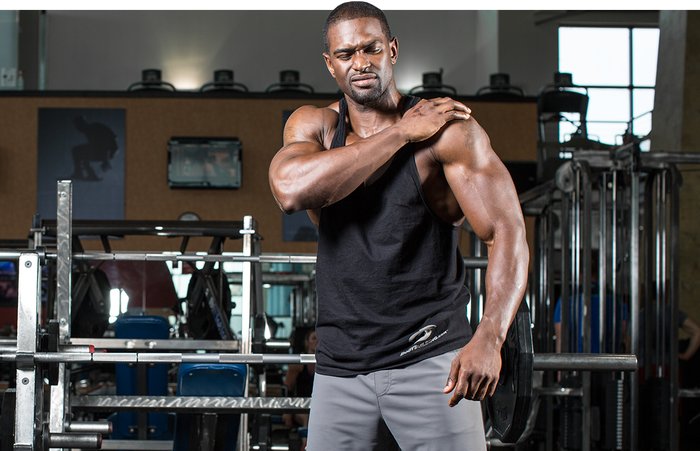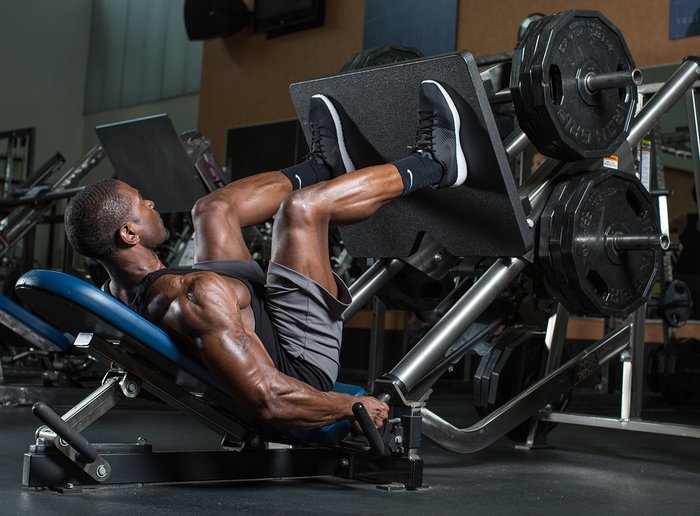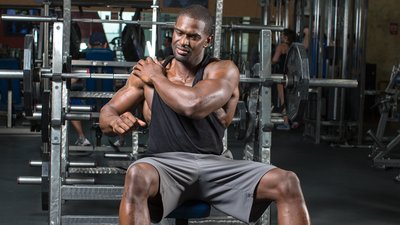Being injured can be a tough pill to swallow, particularly for people who are consistently active, training for an upcoming event, or both. While you may not be able to go back in time and prevent the injury from occurring, youcan control how you respond to it.
Rather than focusing on their recovery, too many gym-goers panic, worried that any time away from the gym will cost them their gains. What's the rush? Most of us aren't professional athletes with our careers and financial stability relying on us getting back three weeks early.
Don't let your ego get in the way of a full recovery. Take a step back and look at the bigger picture of 1, 2, or even 10 years down the road. When you focus on training longevity and being able to do at 50 what you can do at 25, taking the extra few weeks to make sure you're fully healed doesn't seem so bad. Rush back, and you risk enduring chronic issues caused by a single injury. Your risk becoming one of the "I used to lift" guys.
You can't avoid all injuries, but focusing on these five simple strategies can ensure a quick and successful recovery.
1. Accept The Injury
If you spend enough time in the gym, you're bound to get injured. You can panic, try and pretend the injury didn't happen, and keep trying to train through the pain because you were making such good progress. Or, you can step back, view the big picture, and understand that the long-term integrity of your joints and muscles are much more important than your immediate progress.
Sure, you might lose a little muscle and strength, but you'll rebound soon enough. Recognize that, and you can turn your attention to focusing on a quality recovery phase rather than being distracted by what you can't do at the moment.

Speed up your recovery time by sticking to your rehab program. Proper rehabilitation can also help preserve muscle strength and size.
2. Take Your Rehab Seriously
Another incredibly simple piece of advice that's often ignored is to do rehab! It's one of the easiest, most effective ways to improve your recovery time, and it can increase your flexibility, mobility and range of motion around the injured area, which reduces the risk of a repeat injury. Proper rehabilitation can also help preserve muscle strength and size, as well as break up any scar tissue that has formed around the injury site.
I get it; sitting in a chair doing 3 sets of 10 of external shoulder rotations isn't exactly the most stimulating activity. However, it can make the difference between repairing your shoulder and being left with one that feels like a rusty door hinge. Approach your rehab with the same mindset and discipline as you do your regular training, and you'll find yourself cutting down your recovery time and getting back to the fun stuff quicker.
3. Feed Your Injured Muscle
A mistake I see all too often is drastically cutting calories during the recovery period in an attempt to ward off any unanticipated weight gain or increases in body fat. Our bodies need food to recover and repair, even more so during periods of injury. If you have a tear in your pec and can't train the muscle directly for weeks, that muscle will get smaller and weaker. One of the only things you can do when you can't train an injured area is eat sufficiently to try and preserve your hard-earned muscle. Think of it as damage control.
If you cut your calories too drastically, you may end up losing more muscle than you would otherwise, which will set your recovery back a few paces. Instead, lower your calorie intake by 10-20 percent. This will account for your reduced activity while still giving you enough energy to recover and heal. More importantly, it will be much easier to shave off the couple pounds of extra fluff once you're back 100 percent than it will be to try and regain the lost muscle from your "cut."
Fats
Daily fat intake should remain around 15-25% of your daily calories. Favor monounsaturated and omega-3 fats through sources like olive oil, avocados, and salmon. Not only do these fats support heart health and support healthy blood vessels, but omega-3s may also promote a healthy inflammation response after exercise.
Protein
Consider increasing your protein intake, to maintain as much muscle mass as possible, and to aid in the repair process. Eating more protein may also help increase satiety, particularly if you drop your calories to adjust for a lower energy expenditure. Aim for 1 gram of protein per pound of bodyweight per day.
Carbohydrates
While you'll need fewer carbs during recovery than you would while training, you still need an adequate amount to support your recovery. Once you figure out your daily intake for protein and fats, fill in the rest with complex carbohydrates that can help sustain energy levels throughout the day.

Our bodies need food to recover and repair, even more so during periods of injury. Make sure you’re eating enough calories to preserve your hard-earned muscle.
4. Train Everything Else
Just because you strained one of your quad muscles or tweaked your lower back doesn't mean you can't train the other 600 or so muscles in your body. Making a complete departure from the gym will lead to a greater loss of muscle mass, strength, and fitness, setting your recovery back further. Instead, get creative and try to train the rest of your body. This will give you the best chance possible to move forward once you're back and ready to rock.
Train Unilaterally
If you injure a shoulder or leg, you can still train the other side. Cross-education is a term that refers to the process of training one limb (usually arm or leg) and seeing strength maintenance, and sometimes even gains, in the untrained limb, too. This can play a huge role in your recovery process. With a broken foot, for example, instead of avoiding all activity, try incorporating single-leg presses, single-leg extensions, and single-leg curls to try and maintain the size and strength of the injured leg during your recovery.
Work On Your Weakness
Did you tear your hamstring because your quads are much stronger than your hammies? Work on bringing the backs of your legs up to match the front (Always start with lighter weight until you feel the muscle is fully recovered). Destroy your rotator cuff because you have poor mobility around the joint? Spend time during your recovery opening up your chest, shoulders, and surrounding muscles to reduce the risk of it happening again.
You can even use this time to bring up a lagging muscle group, like rear delts, calves, or triceps. Try training them a couple of times per week in lieu of your injured muscle group.

Use lighter weights and higher reps in the first weeks back in the gym. This will give your muscles time to adapt to the load again.
5. Drop The Training Volume When You Get Back
Avoid jumping back into the same sets, reps, and weights you were doing before the injury. One of the worst things you can do for a recovering muscle is trying to overload it straight away and increasing your risk of another injury. Try taking a week or two with lighter weight and higher reps to reinforce the neural pattern of the movement and give the muscle time to adapt to the load again.
Injuries happen, and they can be a bitch. Adjust your mindset, be diligent with rehab and diet, and come back fitter than ever.

